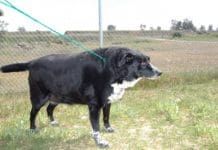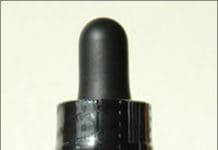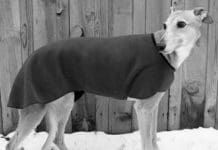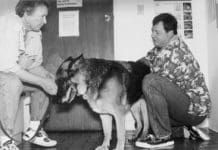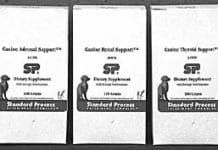Home Search
raw%20dog%20food - search results
If you're not happy with the results, please do another search
Treatment and Prevention of Kidney and Bladder Stones
Canine kidney and bladder stones may be painful and life-threatening, but an informed caregiver can help prevent them. By far the most common uroliths or stones in dogs are struvites and calcium oxalate stones. These two types represent about 80 percent of all canine uroliths. Now we address the remaining stones that can affect our best friends: urate, cystine, calcium phosphate, silica, xanthine, and mixed or compound uroliths.
Preventing Bladder and Kidney Stones in Dogs
Bladder and kidney stones are serious problems in dogs as well as people. These conditions which are also known as uroliths or urinary calculi can be excruciatingly painful as well as potentially fatal. Fortunately, informed caregivers can do much to prevent the formation of stones and in some cases actually help treat stones that develop. Last month, we described struvite stones (see Canine Kidney Stone and Bladder Stone Prevention" Whole Dog Journal April 2010). Struvites contain magnesium
Canine Pancreatitis
Pancreatitis literally means inflammation of the pancreas, the glandular organ that secretes enzymes needed to digest food. When something causes these enzymes to be activated prematurely, they can actually begin to digest the pancreas itself, resulting in pain and inflammation. Pancreatitis occurs in two different forms, acute and chronic, and both may be either mild or severe. Acute pancreatitis occurs suddenly and is more often severe, while chronic pancreatitis refers to an ongoing inflammation that is usually less severe and may even be subclinical (no recognizable symptoms). Acute pancreatitis can be extremely painful, and can become life-threatening if the inflammation spreads, affecting multiple organs and systems. Symptoms commonly include anorexia (loss of appetite), vomiting, weakness, depression, and abdominal pain. Abdominal pain in a dog may be exhibited as restlessness or not wanting to move; a hunched appearance or a praying position, with the chest down and the rear raised; or vocalization (crying or whimpering). Additional symptoms may include diarrhea, drooling, fever, and collapse.
Alternative Views on Holistic Dog Care
We asked several Canine Veterinarians who use complementary and/or alternative medicine: “What are the most basic precepts of ‘holistic dog care’ that dog owners should understand and employ? The points that you want them to absorb if they are to become your regular clients? What dog care practices do you consider to be the bedrock of a vibrant wellness program, and why?” As one might expect from individuals who have explored highly divergent paths in holistic medicine, their answers were idiosyncratic.
Ways to Use Lemon Balm on Dogs
Next month, on May 6, the first day of National Herb Week, lemon balm (Melissa officinalis) becomes Herb of the Year for 2007. A dog-friendly plant with a distinctive lemon-mint fragrance and flavor, lemon balm is best known as a nervine, a calming herb that soothes and relaxes. It's also a digestive aid that neutralizes gas in the stomach and intestines.
Your Dog’s Anal Glands and Sacs
Oh, the smell! Anyone who's ever been in the same room when a frightened dog blows" her anal glands or a veterinarian manually expresses them will never forget the malodorous experience. It's wise for dog owners to be aware of the problems that can arise with these glands
Involuntary Urination
When my dog Popcorn woke up one morning many years ago in a puddle of urine, I panicked, certain that only a deadly illness could cause this perfectly housetrained dog to wet her bed. I rushed her to the vet, where he did a thorough physical exam and urinalysis. I can still remember the relief I felt when my vet told me it appeared to be a simple case of incontinence. As it turns out, incontinence, which is defined as involuntary urination, is quite common in dogs, especially spayed females, where about one in five dogs (20 percent) is affected.
Willard Water – A Powerful Antioxidant
Willard Water is one of life’s mysteries. Most people have never heard of it. Those who have, tend to use it religiously, even though they aren’t sure what it is or how it works. They say it improves digestion, reduces migraine headaches, relieves arthritis, improves skin health, heals burns and wounds without scarring, helps balance blood sugar, treats gum disease, supports detoxification, lowers high blood pressure, alleviates pain, and is helpful in the treatment of dozens of other conditions, including cancer.
Understanding Canine Allergies
Over the years I have treated literally thousands of animal patients for allergic problems, using both Western and alternative medicine methods. The more I think I know about allergies, the more I read and learn about them, the more confused I get. Nothing I have tried therapeutically works with all my patients; some patients get better with hardly any effort on my part; others finally respond to my third or fourth treatment protocol (or 9th or 10th); and some never respond, no matter what I try.
Securing Seacure
Can you imagine a food so easy to assimilate that even the most impaired digestive tract absorbs it on contact? Originally developed to combat world hunger, this amazing protein supplement is now saving dogs. Seacure, which is made from Pacific whiting caught in the Pacific Northwest, contains beneficial omega-3 fatty acids and other fish nutrients, but its amino acids and peptides (the fundamental constituents of protein) are its primary healing ingredients.
Canine Glandular or Organ Therapy
The premise seems simple - if your dog has liver problems, feed him liver. What if it's a kidney, thyroid, or adrenal problem? Then feed kidney, thyroid, or adrenal tissue. This is, in its simplest form, glandular or organ therapy. The process has become much more refined over the years. Now your dog can experience the benefits of glandular therapy even when you can't find the raw glands or other organs to feed him. Now, glandulars (the common term for products containing animal cells even if they aren't from glands) are available in tablet, capsule, and liquid form, depending on the manufacturer.




